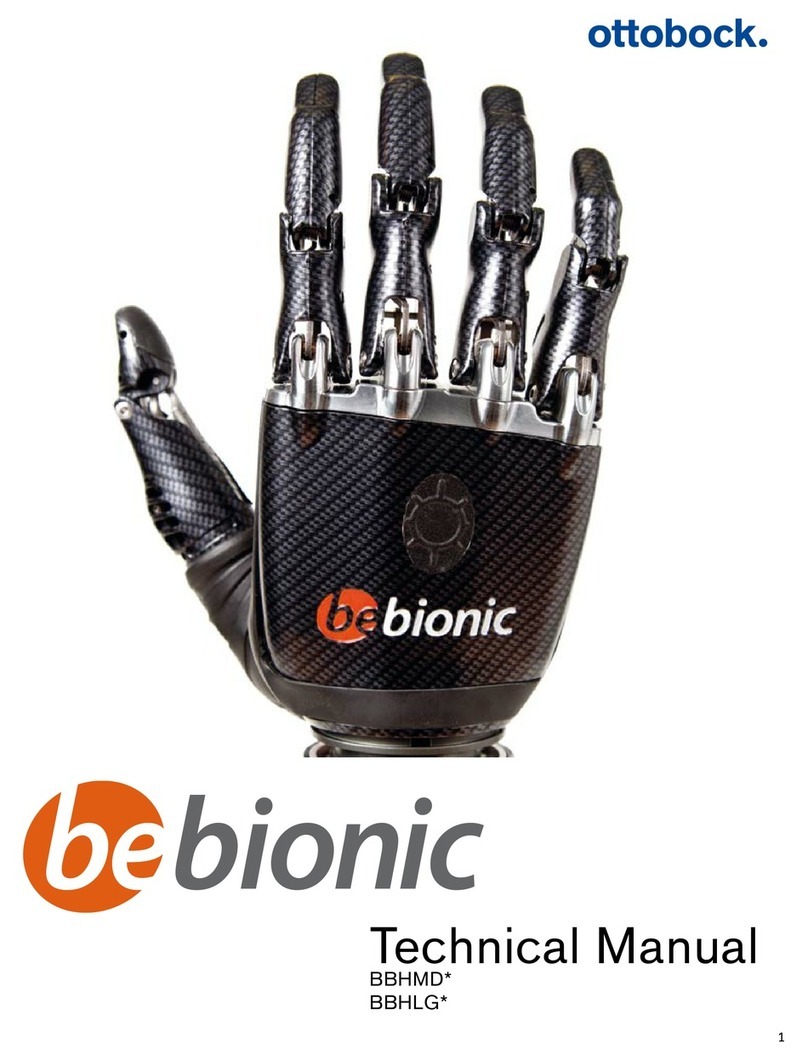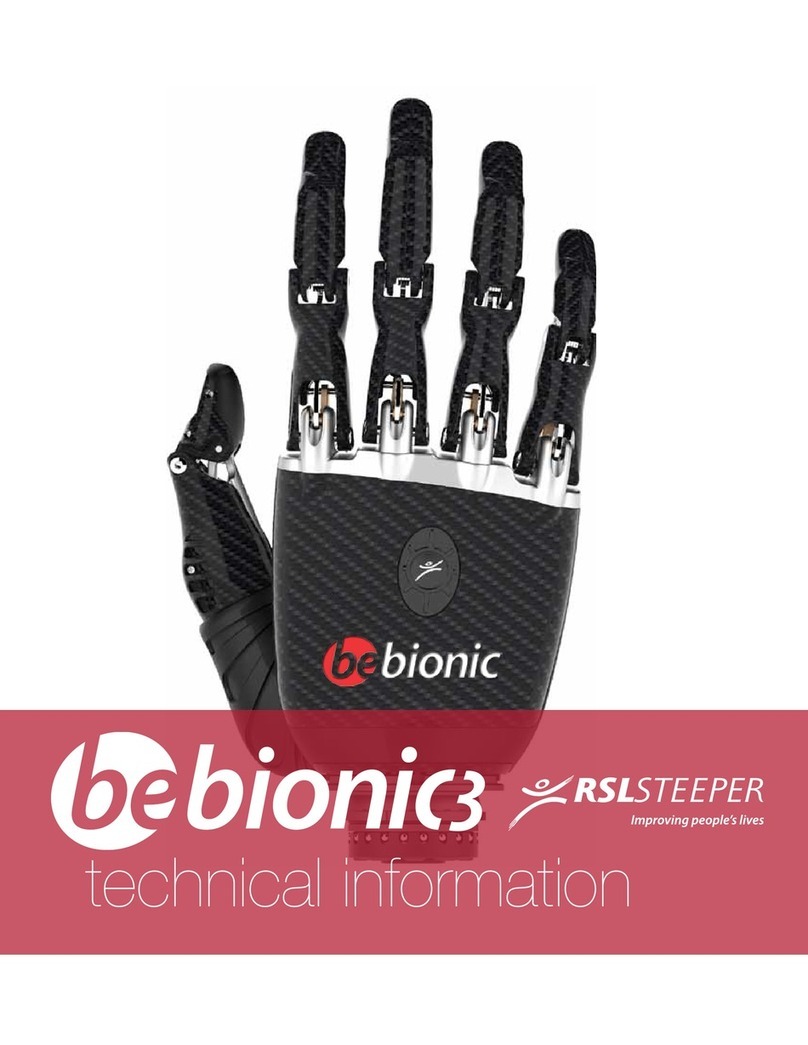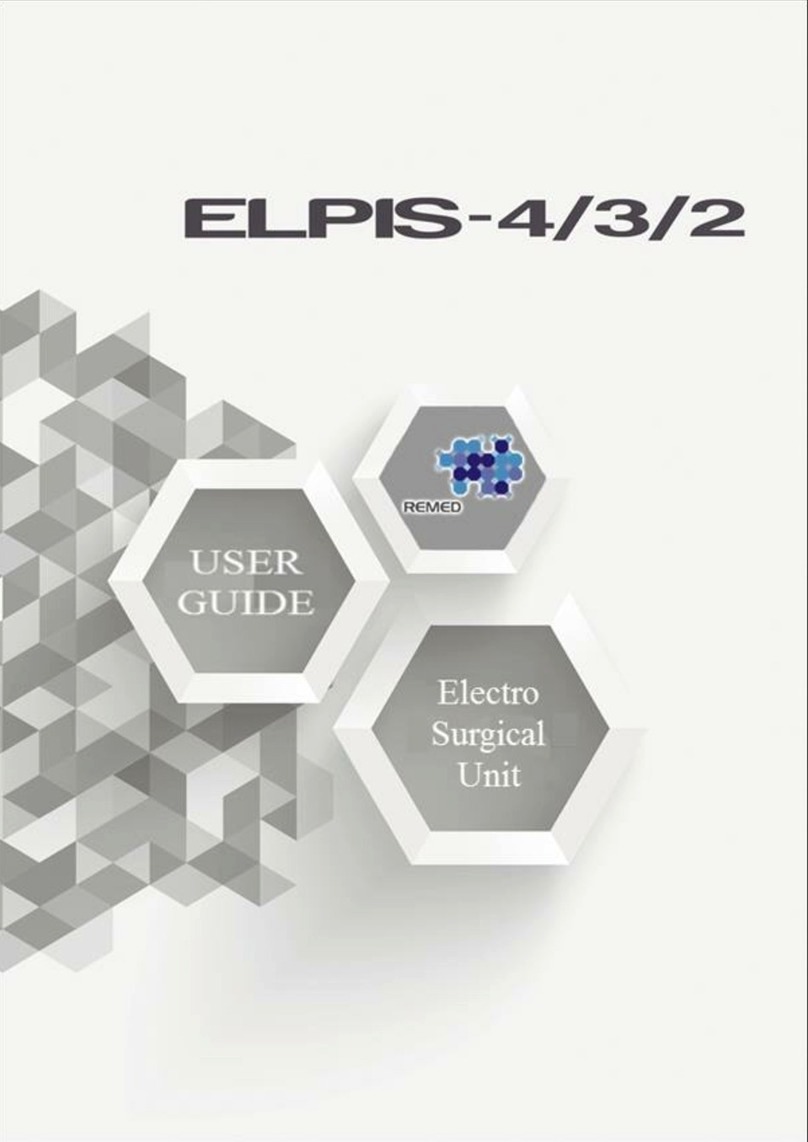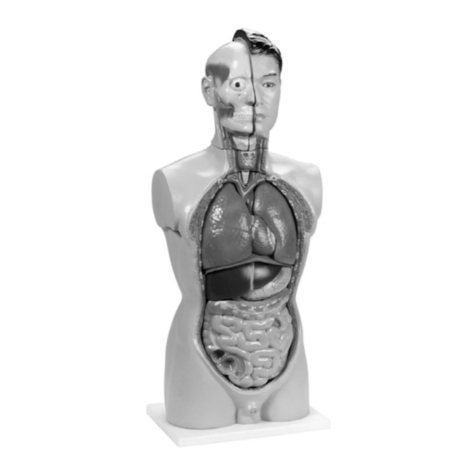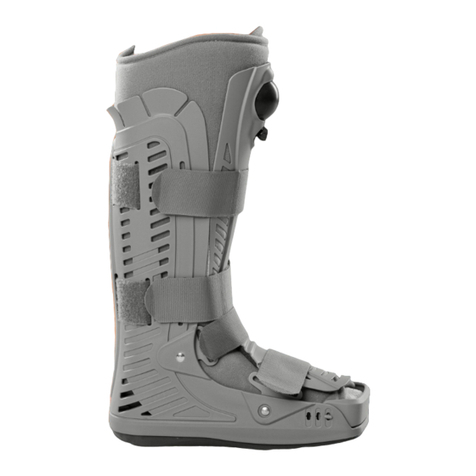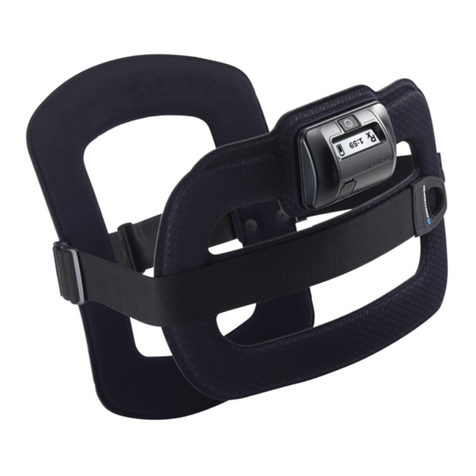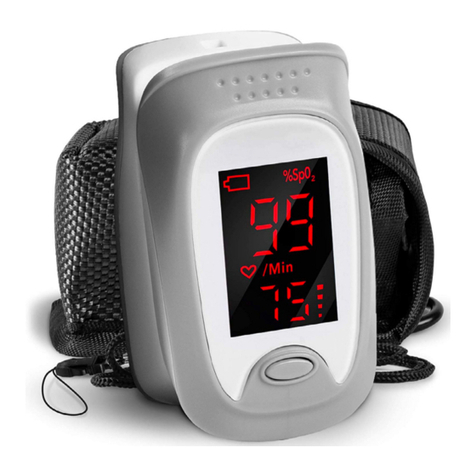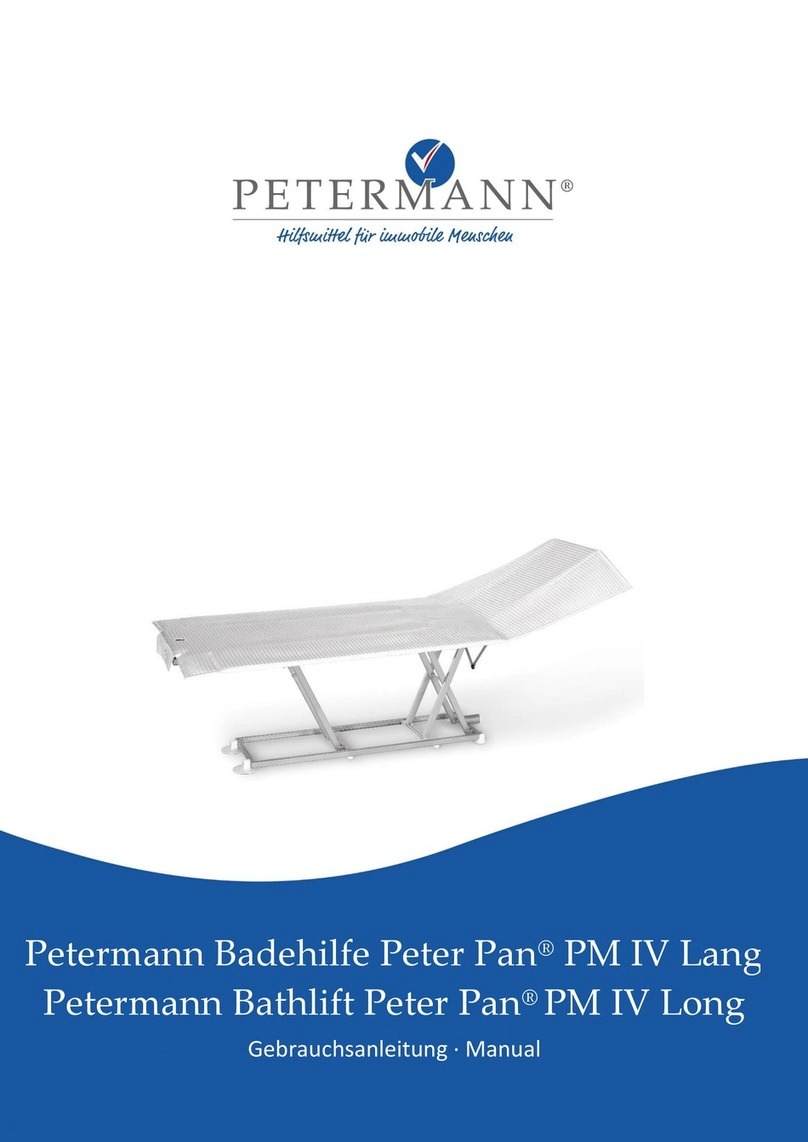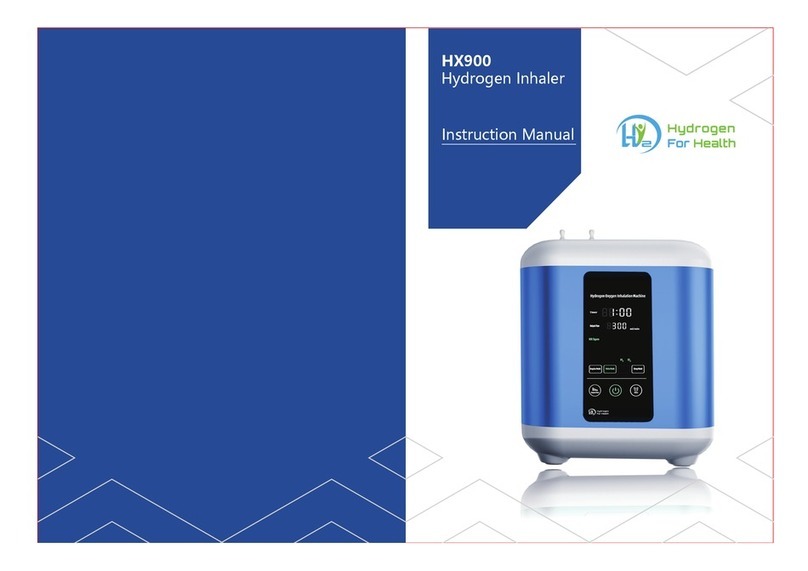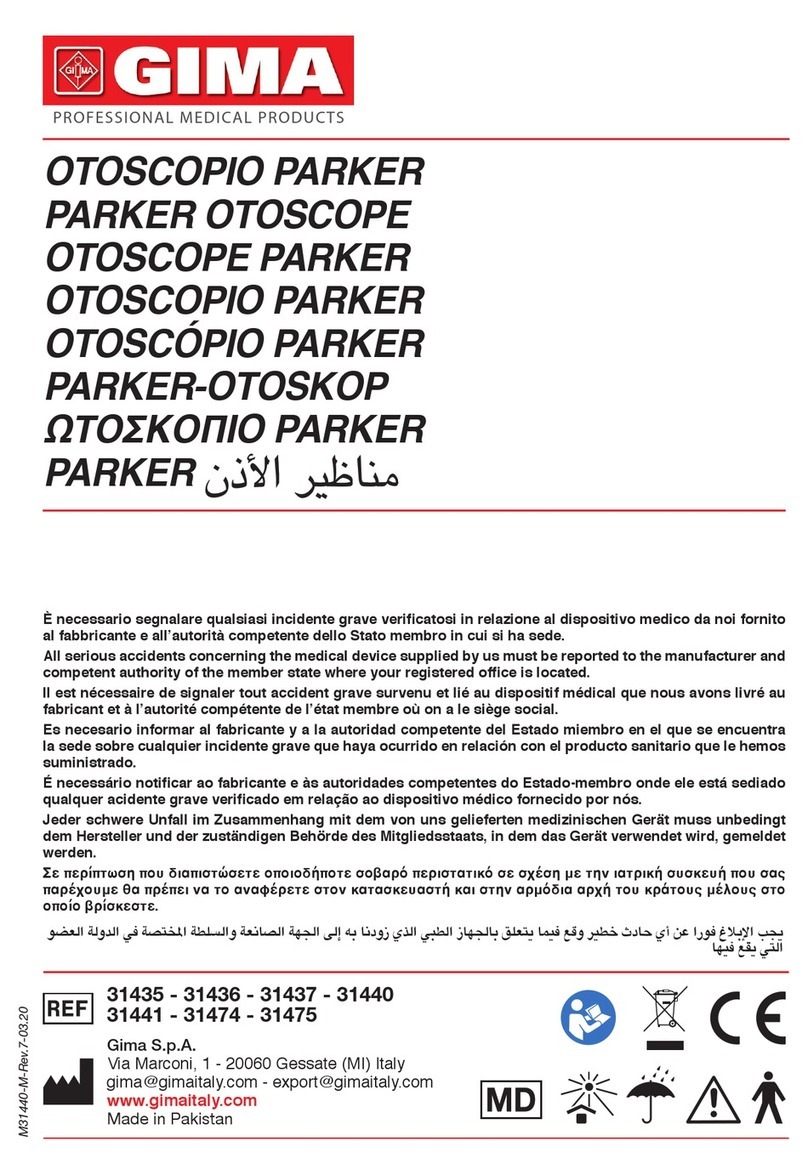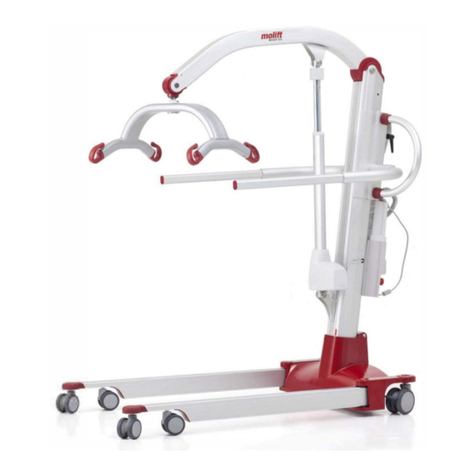be bionic bebionic3 Manual

technical information

2
technical information

3
Contents
1.0 Introduction...........................................................................................................04-07
1.1 In the Case
1.2 Principal Dimensions
1.3 Specifications
2.0 bebionic Grips...................................................................................................... 09-19
2.1 Factory Settings
2.2 Program Switch
2.3 Thumb Adjustment
2.4 Opposed Grips
2.5 Non-Opposed Grips
2.6 Further Grips and Hand Positions
3.0 bebionic Glove......................................................................................................21-25
3.1 How to fit a bebionic Glove
3.2 Removing a bebionic Glove
3.3 Care Instructions for bebionic Glove
4.0 Connections & Compatibility................................................................................... 27-35
4.1 Wrist Options
4.2 Battery Options
4.3 Power Information
4.4 System Connections
4.5 System Compatibility
5.0 bebalance ........................................................................................................... 37-49
5.1 Introduction
5.2 Installation
5.3 Start Up
5.4 Language Selection
5.5 Radio Frequency Dongle Configuration
5.6 Operating Modes
5.7 Hand Configuration
5.8 Grip Selection
5.9 Advanced
6.0 Additional Information, Warranty, Repairs and Returns...............................................51-63
6.1 Gaiter Removal
6.2 Gaiter Refitting
6.3 Clevis Link Replacement
6.4 Quality Assurance
6.5 Warranty
6.6 Returns

04
1.0 Introduction
This document contains important information
for the correct use and set up of the bebionic3
hand. Please note some images may differ
as this document applies to both the medium
and large size hands. Read this document
thoroughly before fitting a bebionic3 hand.
A bebionic system is completed by adding from
a selection of compatible system components
including electrodes (or other input devices),
battery systems, wrists and cables. We
recommend RSLSteeper / SteeperUSA
components.
The bebionic3 hand is designed for mild to
moderate activities. Avoid use in situations with
heavy loads, vibrations or impacts.
Key:
Text with this symbol contain important
safety information.
WARNING
!CAUTION
Text with this symbol highlights potential
sources of damage to the hand.
The bebionic hand contains Electrostatic
Sensitive Devices. Any disassembly on this
hand must be carried out by RSLSteeper
authorised personnel in an Electrostatic
Protected Area (EPA). Failure to do this
could cause ESD damage which will affect
the reliability of the product and could
impact product warranty.
WARNING
We do not recommend the use of carbon
fibre materials in fabricating a prosthetic arm
due to electrical conductivity. If however it
is used then it is important to ground the
carbon fibre lamination.
WARNING

05
1.1 In the Case
1. 2.
3.
4.
5.
6.
7.
1. bebionic Radio Frequency (RF) Dongle
2. bebionic3 Hand
3. bebionic Tool Kit
4. bebionic in-car Charger
5. bebalance Programming Software
6. bebionic3 User Guide
7. bebionic3 Technical Information

06
1.2 Principal Dimensions
Principal Dimensions Large Medium
A Middle Finger Tip to Hand Base 7 7⁄8” (200mm) 7 1⁄2” (190mm)
B Thumb Tip to Hand Base 4 7⁄8” (125mm) 4 3⁄4” (121mm)
C Max Chassis Width (no glove) 3 5⁄8” (92mm) 3 1⁄4” (84mm)
D Diameter of Chassis at Wrist 2” (50mm) 2” (50mm)
Palm Circumference (no glove) 8 5⁄8” (220mm) 8” (204mm)
Maximum Opening Width - Tripod Grip 4 1⁄8” (105mm - with glove) 4 1⁄8” (105mm - with glove)
Thumb Swing Through Angle 68o68o
X EQD Only 1⁄4” (5mm) 1⁄4” (5mm)
B
D
X
A
C
X

07
1.3 Specifications
†Build height comprises of thumb tip to base of hand measurement, followed by the build height for each wrist option.
The second number refers to the minimum allowance for the mating wrist unit.
*Denotes side of hand, Insert L for a left hand, or R for a right hand.
Part Number Build Height †Weight Description
BBHLG*QD 4 7/8” + 1”
(125mm + 25mm)
1lb 5oz
(598g) bebionic3 Large Hand with EQD Wrist
BBHLG*QD-MF 6 1⁄8” + 1”
(155mm + 25mm)
1lb 8oz
(698g) bebionic3 Large Hand with Multi-Flex Wrist
BBHLG*SW 4 7/8” + 1/2”
(125mm + 12mm)
1lb 4oz
(577g) bebionic3 Large hand with Short Wrist
BBHMD*QD 4 6/8” + 1”
(121mm + 25mm)
1lb 5oz
(591g) bebionic3 Medium Hand with EQD Wrist
BBHMD*QD-MF 6” + 1”
(151mm + 25mm)
1lb 8oz
(691g) bebionic3 Medium Hand with Multi-Flex Wrist
BBHMD*SW 4 6/8” + 1/2”
(121mm + 12mm)
1lb 4oz
(570g) bebionic3 Medium Hand with Short Wrist
Large Medium
maximum power grip force 140.1N 140.1N
maximum tripod grip force 36.6N 36.6N
maximum key grip force 26.5N 26.5N
maximum time to open or close - tripod grip 0.5 seconds 0.5 seconds
maximum time to open or close - power grip 1.0 seconds 1.0 seconds
maximum time to open or close - key grip 1.0 seconds 1.0 seconds
maximum static load - hook grip 99lb 3oz (45kg) 99lb 3oz (45kg)
maximum load individual finger - hook grip 55lb 2oz (25kg) 55lb 2oz (25kg)
maximum finger tip extension load 13lb 3oz (6kg) 13lb 3oz (6kg)
maximum safe vertical load taken through knuckles 198lb 6oz (90kg) 198lb 6oz (90kg)

08
2.0 bebionic grips

09
The bebionic3 hand provides 14
different grip patterns, allowing the
user to have a more complete device
to assist them in their day to day life.
The hand has two selectable thumb
positions: opposed and
non-opposed.
Opposed places the thumb in
opposition to the fingers on the hand,
allowing grips like Pinch and Power.
Non-Opposed places the thumb
parallel with the fingers of the hand
and allows grips like Key and Finger
Point.
Opposed Non-Opposed

10
The hand is supplied preset in Mode 4. This provides
two input operation with proportional control of grip and
speed. Speed and grip force are set to maximum.
To alternate between the default and alternative grip
pattern, an OPEN OPEN signal must be applied (i.e. the
hand must be fully opened, the signal relaxed and then
a second open signal supplied). To alternate between
the primary grip pattern table and secondary grip pattern
table, press the Program Switch for less than two
seconds. The Auto Grip feature is turned off.
Introduction
Primary Opposed
Default - Tripod
Alternative - Power
Primary Non-Opposed
Default - Key
Alternative - Finger Point
Secondary Opposed
Default - Active Index
Alternative - Tripod
Secondary Non-Opposed
Default - Column
Alternative - Mouse
A Program Switch is provided on the back of the hand.
This has four functions;
1. Switch the hand ON and OFF
A single press for approximately three seconds will
switch the hand OFF. A single press for more than two
seconds will switch the hand ON.
2. Alternate between the primary and secondary
grip patterns
When the hand is switched ON, a single press of less
than two seconds will alternate between the primary and
secondary grip patterns. This will be accompanied by
a short bleep and vibration (if activated on bebalance).
3. Enable / disable the in-hand RF dongle
With the hand switched ON, a single press for more
than four seconds will enable the RF module. Pressing
the switch again for more than two seconds or
disconnecting the power to the hand will disable the RF
module.
4. Enter / exit glove mode as follows
With the hand switched OFF, press the switch until the
thumb begins to drive in. Then release the switch.
2.2 Program Switch
2.1 Factory Settings

11
2.3 Thumb Adjustment.
To achieve certain grips it is necessary to adjust the thumb position. There are two different
planes to move the thumb in, as detailed below.
2.31. Thumb ML Adjuster 2.32. Thumb Contact Point Adjuster
Underside of Thumb Bracket
An adjuster has also been provided to alter the baseline
position of the thumb, in order to optimize the contact
point of the thumb tip against the opposing finger(s)
for Tripod, Pinch and Precision Grips. This is done by
moving the thumb either towards the palm or away
from the palm. This adjuster is located under the thumb
bracket as shown above. Using a hex drive the adjuster
should be turned clockwise to move the thumb towards
the palm and counterclockwise to move the thumb
away from the palm. The effect will not be observed
while making the adjustment and can only be observed
by resetting the hand i.e. switching the hand OFF and
ON again.
An adjuster is provided to allow repositioning of the
thumb for contact with either the index and middle
fingers, as in Tripod Grip, or with index finger only, as in
Pinch and Precision Grips. The thumb pivot assembly is
fitted with a slotted screw as shown above. This acts to
adjust the friction on an internal clamp and is loosened
by making two complete turns and pushing the screw
inward. With the clamp slackened the thumb position
can be manually repositioned. The assembly must be
retightened before electrically driving the thumb.
Please ensure screw is securely tightened
before resuming use.
WARNING
Thumb adjustment MUST be completed
by a qualified technician or practitioner
CAUTION
!

12
Grips
Pinch
The thumb only contacts index
finger and is used for the fine
manipulation of objects. To achieve
this grip it is necessary for the
thumb to be manually repositioned
by the practitioner/technician so
that the thumb only contacts the
index finger (See section 2.3).
2.4 Opposed - Thumb is opposite to the fingers
Tripod
When the thumb is opposed, the
hand closes into Tripod Grip with
index and middle fingers meeting
the thumb. Ring and little fingers
continue to close until they meet
resistance or the close signal
stops. This type of grip allows users
to pick up, hold and manipulate a
variety of everyday objects such as
car keys, coins, jar lids and pens.

13
Power
With the thumb opposed, all four
fingers close into the palm until
they meet resistance or the close
signal stops. When fingers are
approaching a fully closed position,
the thumb drives in to cover the
fingers for additional grip security.
This pattern allows round objects
such as a ball or a piece of fruit to
be held securely. This grip can also
provide a handshake. Cylindrical
shaped objects such as bottles,
home and garden utensil handles
are also held easily and securely.
Active Index
With the thumb opposed Active
Index Grip will grasp the handle of
an object with the middle, ring and
little fingers and secure the grip with
the thumb. The index finger will then
close – this may be positioned over
the lever of the device held such
as a spray bottle, it also offers the
ideal finger position for typing. The
index finger is under independent
user control and may be positioned
accordingly. To exit Active Index, an
open signal will fully open the index
finger before the other fingers and
thumb release their grip.
The bebionic hand MUST NOT be used to
operate a firearm.
SERIOUS WARNING

14
Grips
2.5 Non-Opposed - thumb is inline with the palm.
Key
In the non-opposed thumb
position, the four fingers partially
close. The thumb then closes onto
the side of the index finger. The
thumb position may be raised and
lowered without moving the other
four fingers allowing for release,
capture or reposition of the object
being gripped. This pattern is ideal
for carrying paper or letters, using
a spoon and for holding a thin flat
object such as a plate, a credit
card or a key.
Finger Point
With the thumb in the non-
opposed setting, the user can
move to Finger Point position. The
middle, ring, and little fingers close
against the palm and the thumb
moves against the middle finger.
With this grip, typing on a keyboard
or input pad, pressing a bell or a
button can be achieved.

15
Column
This grip moves the thumb into the
palm from a non-opposed position.
The fingers then close over the
thumb to provide a fixed column
that can be used as a way to push
heavier objects or larger buttons
and switches. Column is also the
recommended grip for dressing, as
the thumb is kept out of the way.
Mouse
The thumb and little finger close
to hold the side of the mouse,
with the middle and ring fingers
providing stability. The index finger
closes on to the mouse button and
then backs off to provide the button
press. Each close signal will give a
mouse click whilst an open signal
will release the mouse.

16
Grips
2.6 Further functions of the bebionic3 hand.
Precision Closed
This grip can be used in situations
similar to the Precision Open Grip,
but where extended fingers would
be obstructive, such as working at
a desk. Initially the middle, ring and
little fingers close into the palm. The
thumb moves to the midpoint of
its range and pauses. The Index is
then active and under user control.
(To achieve this grip it is necessary
for the thumb to be manually
repositioned by the practitioner/
technician so that the thumb only
contacts the index finger.)
Precision Open
With the thumb opposed, the
index finger meets the static thumb
allowing the user to pick up and
manipulate small objects. When this
grip is selected and a close signal
is applied, the thumb closes to the
midpoint of its range and pauses.
The index is then active and under
user control. The middle, ring and
little fingers remain extended.
(To achieve this grip it is necessary
for the thumb to be manually
repositioned by the practitioner/
technician so that the thumb only
contacts the index finger.)

17
Hook
With the thumb in opposed
position, a partially closed Power
Grip provides Hook Grip.This is
ideal for carrying a shopping bag
or briefcase. Hook Grip can also
be achieved by closing the fingers
from the relaxed hand position.
Finger Adduction
The fingers of the bebionic hand
move together naturally as the
fingers close. This allows the user
to securely grip thin objects, such
as cutlery or a toothbrush, between
the fingers to achieve function in a
different plane. Finger Adduction
is most functional with the hand
in Power Grip but can also be
achieved with the hand in Key Grip
and Pinch Grip.

18
Grips
2.6 Further functions of the bebionic3 hand.
Open Palm
With the thumb in the non-
opposed position the hand may
be fully opened to provide a flat
palm suitable for carrying a tray
or a plate.
Relaxed Hand
The thumb is set to the non-
opposed position and partially
driven in toward the palm. All the
fingers are driven to a slightly
flexed position.
Applying a further signal will drive
the fingers into Hook Grip for a
carrying position.

19
be yourself

20
3.0 bebionic glove
Table of contents
Other be bionic Medical Equipment manuals
Popular Medical Equipment manuals by other brands
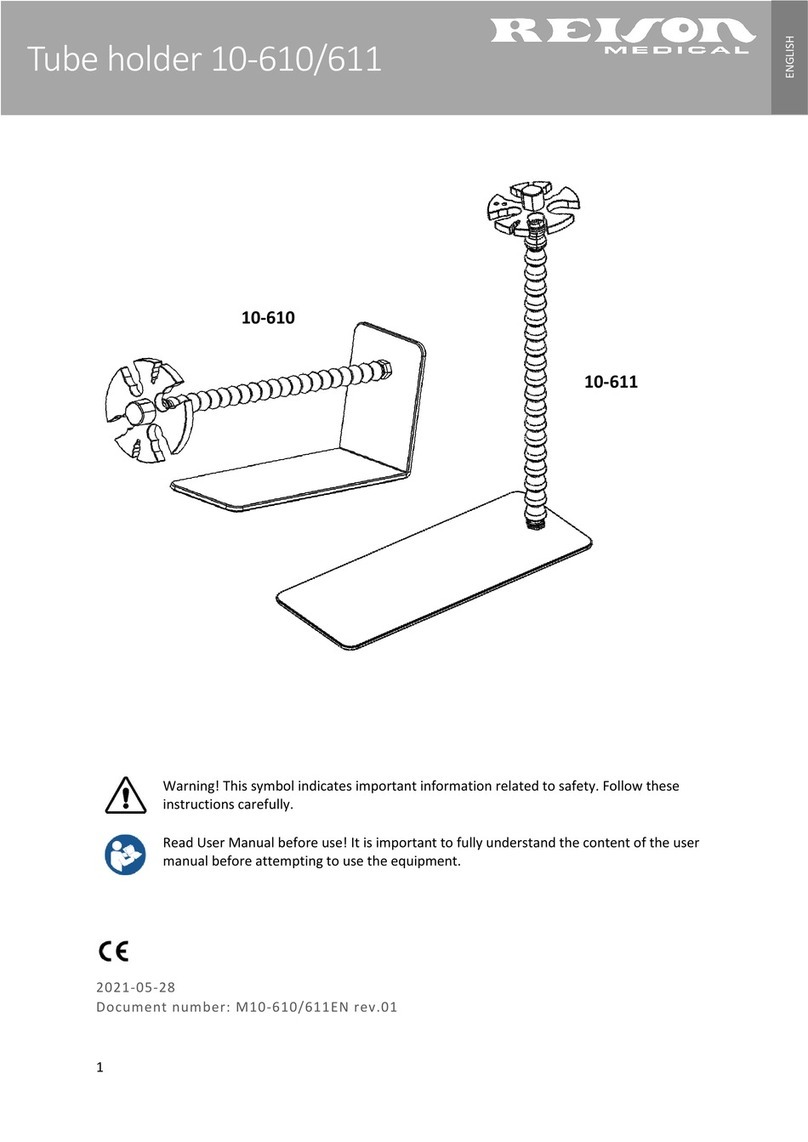
Reison
Reison 10-610 quick start guide
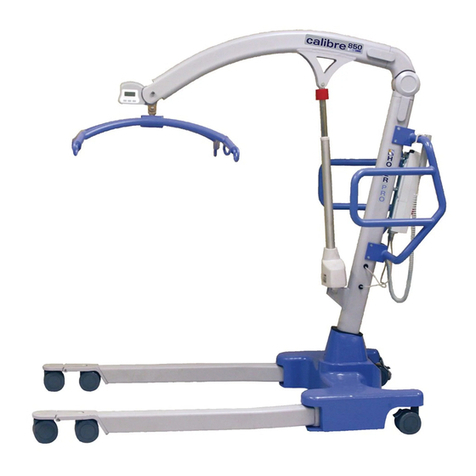
Joerns Healthcare
Joerns Healthcare Hoyer Calibre User instruction manual & warranty
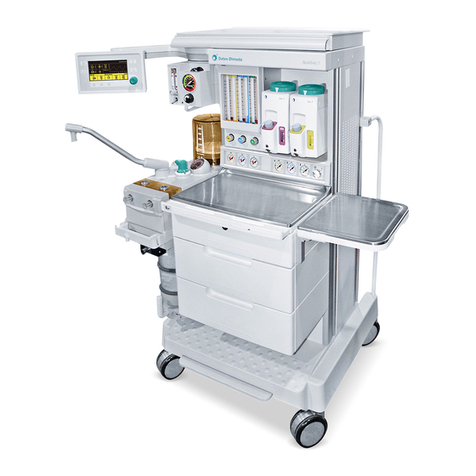
GE
GE Aestiva/5 quick start guide
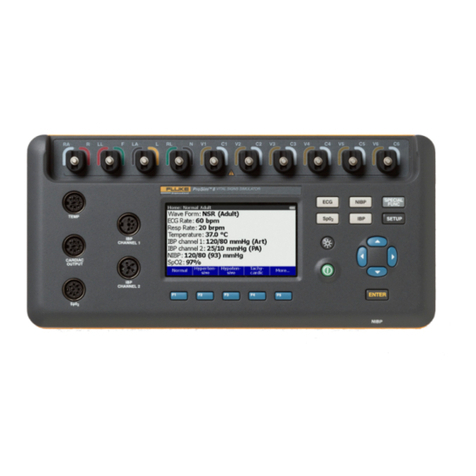
Fluke Biomedical
Fluke Biomedical ProSim 8 Series Getting started manual

Rotaid
Rotaid SOLID PLUS installation manual
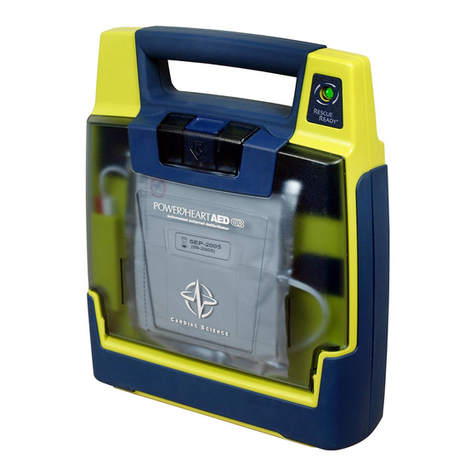
Cardiac Science
Cardiac Science Powerheart AED G3 Plus 9390E Operator's and service manual
